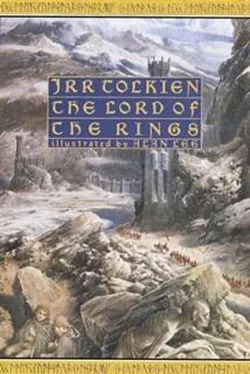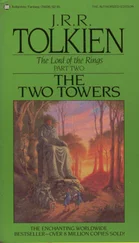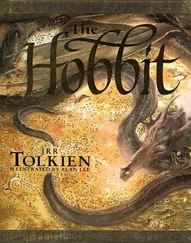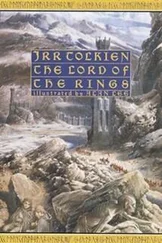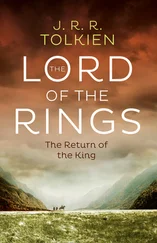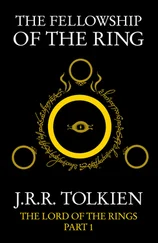John Tolkien - The Return of the King
Здесь есть возможность читать онлайн «John Tolkien - The Return of the King» весь текст электронной книги совершенно бесплатно (целиком полную версию без сокращений). В некоторых случаях можно слушать аудио, скачать через торрент в формате fb2 и присутствует краткое содержание. Жанр: Фэнтези, на английском языке. Описание произведения, (предисловие) а так же отзывы посетителей доступны на портале библиотеки ЛибКат.
- Название:The Return of the King
- Автор:
- Жанр:
- Год:неизвестен
- ISBN:нет данных
- Рейтинг книги:5 / 5. Голосов: 1
-
Избранное:Добавить в избранное
- Отзывы:
-
Ваша оценка:
- 100
- 1
- 2
- 3
- 4
- 5
The Return of the King: краткое содержание, описание и аннотация
Предлагаем к чтению аннотацию, описание, краткое содержание или предисловие (зависит от того, что написал сам автор книги «The Return of the King»). Если вы не нашли необходимую информацию о книге — напишите в комментариях, мы постараемся отыскать её.
The Return of the King — читать онлайн бесплатно полную книгу (весь текст) целиком
Ниже представлен текст книги, разбитый по страницам. Система сохранения места последней прочитанной страницы, позволяет с удобством читать онлайн бесплатно книгу «The Return of the King», без необходимости каждый раз заново искать на чём Вы остановились. Поставьте закладку, и сможете в любой момент перейти на страницу, на которой закончили чтение.
Интервал:
Закладка:
The Calendar in the Shire differed in several features from ours. The year no doubt was of the same length, 60 60 365 days, 5 hours, 48 minutes, 46 seconds.
for long ago as those times are now reckoned in years and lives of men, they were not very remote according to the memory of the Earth. It is recorded by the Hobbits that they had no 'week' when they were still a wandering people, and though they had 'months', governed more or less by the Moon, their keeping of dates and calculations of time were vague and inaccurate. In the west-lands of Eriador, when they had begun to settle down, they adopted the King's Reckoning of the Dúnedain, which was ultimately of Eldarin origin; but the Hobbits of the Shire introduced several minor alterations. This calendar, or 'Shire Reckoning' as it was called, was eventually adopted also in Bree, except for the Shire usage of counting as Year 1 the year of the colonization of the Shire.
It is often difficult to discover from old tales and traditions precise information about things which people knew well and took for granted in their own day (such as the names of letters, or of the days of the week, or the names and lengths of months). But owing to their general interest in genealogy, and to the interest in ancient history which the learned amongst them developed after the War of the Ring, the Shire-hobbits seem to have concerned themselves a good deal with dates; and they even drew up complicated tables showing the relations of their own system with others. I am not skilled in these matters, and may have made many errors; but at any rate the chronology of the crucial years S.R. 1418, 1419 is so carefully set out in the Red Book that there cannot be much doubt about days and times at that point.
It seems clear that the Eldar in Middle-earth, who had, as Samwise remarked, more time at their disposal, reckoned in long periods, and the Quenya word yén , often translated 'year' (1, 491), really means 144 of our years. The Eldar preferred to reckon in sixes and twelves as far as possible. A 'day' of the sun they called ré and reckoned from sunset to sunset The yén contained 52.596 days. For ritual rather than practical purposes the Eldar observed a week or enquië of six days; and the yén contained 8,766 of these enquier, reckoned continuously throughout the period.
In Middle-earth the Eldar also observed a short period or solar year, called a coranar or 'sun-round' when considered more or less astronomically, but usually called loa 'growth (especially in the north-western lands) when the seasonal changes in vegetation were primarily considered, as was usual with the Elves generally. The loa was broken up into periods that might be regarded either as long months or short seasons. These no doubt varied in different regions; but the Hobbits only provide information concerning the Calendar of Imladris. In that calendar there were six of these 'seasons", of which the Quenya names were tuilë, lairë, yávië, quellë, hrívë, coirë, which may be translated 'spring, summer, autumn, fading, winter, stirring'. The Sindarin names were ethuil, laer , iavas, firith, rhîw, echuir. 'Fading' was also called lasse-lanta 'leaf-fall', or in Sindarin narbeleth 'sun-waning'.
Lairë and hrívë each contained 72 days, and the remainder 54 each. The loa began with yestarë, the day immediately before tuilë, and ended with mettarë, the day immediately after coirë. Between yávië and quellë were inserted three enderi or 'middle-days'. This provided a year of 365 days which was supplemented by doubling the enderi (adding 3 days) in every twelfth year.
How any resulting inaccuracy was dealt with is uncertain. If the year was then of the same length as now, the yén would have been more than a day too long. That there was an inaccuracy is shown by a note in the Calendars of the Red Book to the effect that in the 'Reckoning of Rivendell' the last year of every third yén was shortened by three days: the doubling of the three enderi due in that year was omitted; 'but that has not happened in our time'. Of the adjustment of any remaining inaccuracy there is no record.
The Númenoreans altered these arrangements. They divided the loa into shorter periods of more regular length; and they adhered to the custom of beginning the year in mid-winter, which had been used by Men of the North-west from whom they were derived in the First Age. Later they also made their week one of 7 days, and they reckoned the day from sunrise (out of the eastern sea) to sunrise.
The Númenorean system, as used in Númenor, and in Arnor and Gondor until the end of the kings, was called King's Reckoning. The normal year had 365 days. It was divided into twelve astar or months, of which ten had 30 days and two had 31. The long astar were those on either side of the Mid-year, approximately our June and July. The first day of the year was called yestarë, the middle-day (I83rd) was called loëndë, and the last day mettarë, these 3 days belonged to no month. In every fourth year, except the last of a century ( haranyë ), two enderi or 'middle-days' were substituted for the loëndë.
In Númenor calculation started with S.A. 1. The Deficit caused by deducting 1 day from the last year of a century was not adjusted until the last year of a millennium, leaving a millennial deficit of 4 hours, 46 minutes, 40 seconds. This addition was made in Númenor in S.A. 1000, 2000, 3000. After the Downfall in SA. 3319 the system was maintained by the exiles, but it was much dislocated by the beginning of the Third Age with a new numeration: S.A. 3442 became T.A. 1. By making TA. 4 a leap year instead of T.A. 3 (S.A. 3444) 1 more short year of only 365 days was intruded causing a deficit of 5 hours, 48 minutes, 46 seconds. The millennial additions were made 441 years late: in TA. 1000 (S-A. 4441) and 2000 (S.A. 5441). To reduce the errors so caused, and the accumulation of the millennial deficits, Mardil the Steward issued a revised calendar to take effect in T.A. 2060, after a special addition of 2 days to 2059 (SA. 5500), which concluded 5½ millennia since the beginning of the Númenorean system. But this still left about 8 hours deficit Hador to 2360 added 1 day though this deficiency had not quite reached that amount. After that no more adjustments were made. (In T.A. 3000 with the threat of imminent war such matters were neglected.) By the end of the Third Age, after 660 more years, the Deficit had not yet amounted to 1 day.
The Revised Calendar introduced by Mardil was called Stewards' Reckoning and was adopted eventually by most of the users of the Westron language, except the Hobbits. The months were all of 30 days, and 2 days outside the months were introduced: 1 between the third and fourth months (March. April), and 1 between the ninth and tenth (September. October). These 5 days outside the months, yestarë, tuilérë, loëndë, yáviérë, and mettarë, were holidays.
The Hobbits were conservative and continued to use a form of Kings' Reckoning adapted to fit their own customs. Their months were all equal and had 30 days each; but they had 3 Summerdays, called in the Shire the Lithe or the Lithedays, between June and July. The last day of the year and the first of the next year were called the Yuledays. The Yuledays and the Lithedays remained outside the months, so that January 1 was the second and not the first day of the year. Every fourth year, except in the last year of the century, 61 61 In the Shire, in which Year 1 corresponded with T.A. 1601. In Bree in which Year 1 corresponded with T.A. 1300 it was the first year of the century.
there were four Lithedays. The Lithedays and the Yuledays were the chief holidays and time of feasting. The additional Litheday was added after Mid-year's Day, and so the 184th day of the Leap-years was called Overlithe and was a day of special merrymaking. In full Yuletide was six days long, including the last three and first three days of each year.
Интервал:
Закладка:
Похожие книги на «The Return of the King»
Представляем Вашему вниманию похожие книги на «The Return of the King» списком для выбора. Мы отобрали схожую по названию и смыслу литературу в надежде предоставить читателям больше вариантов отыскать новые, интересные, ещё непрочитанные произведения.
Обсуждение, отзывы о книге «The Return of the King» и просто собственные мнения читателей. Оставьте ваши комментарии, напишите, что Вы думаете о произведении, его смысле или главных героях. Укажите что конкретно понравилось, а что нет, и почему Вы так считаете.
